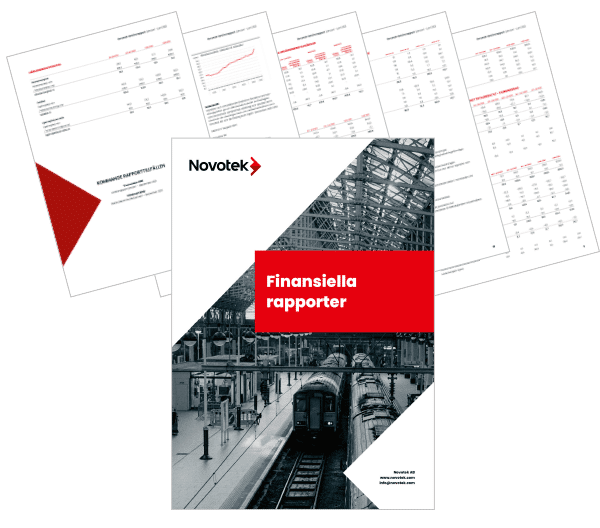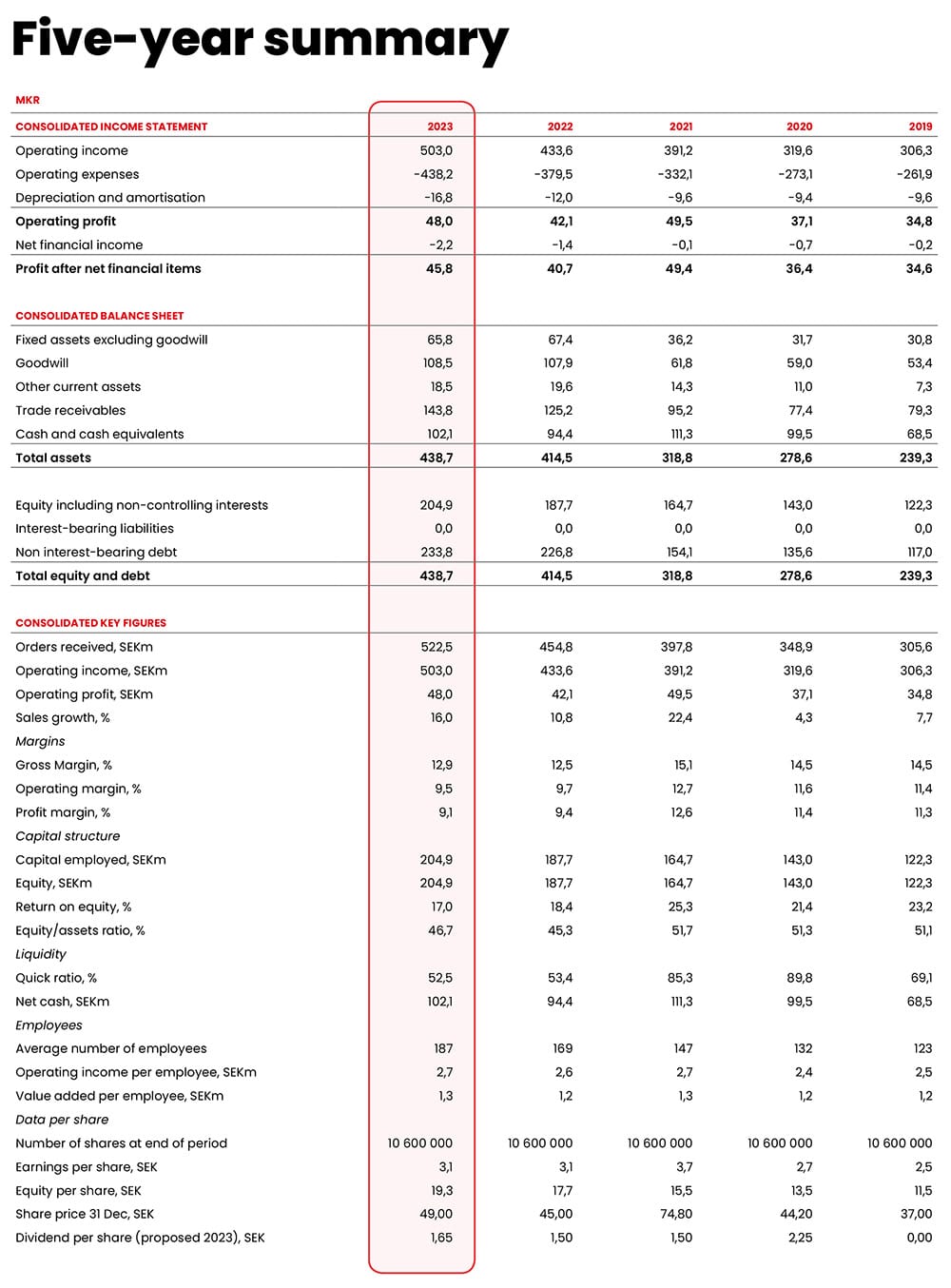Financial data
Novotek goal is to achieve an average annual growth of 15 percent and an operating margin of approximately 10 percent over a business cycle. Parallel to this, acquisition opportunities are regularly evaluated.

Calendar
16/2/2024
Year-End Report
January – December 2023
6/5/2024
Interim report
January – March 2024
6/5/2024
Annual General Meeting
16/8/2024
Interim report
January – June 2024
7/11/2024
Interim report
January – September 2024
14/2/2025
Year-End Report
January – December 2024
Financial reports
(Only in Swedish)
Click on image to open a large version >>
Key ratio definition
Sales growth
Increased/decreased operating income excluding capitalized development exenditures.
Gross margin
Income before depreciation and items affecting comparability in percentage of operating income.
Operating profit margin
Income after depreciation and items affecting comparability in percentage of operating income.
Net profit margin
Income after financial items in percentage of operating income.
Working capital
Total assets less non interest bearing debt
Return on equity
Income after taxation in percentage of average equity.
Equity ratio
Adjusted equity in percentage of total assets.
Quick asset ratio
Net cash in percentage of short term debt.
Net cash
Cash and cash equivalents.
Average number of employees
Average number of full year equivalent employees.
Value added per employee
Operating profit and employee cost compared with average number of employees.
Profit per share
Income after tax compared with total number of shares.
Equity per share
Equity by end of year compared with total number of shares.
